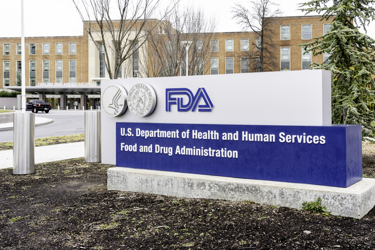FDA Issues Draft Guidance For Cell & Gene Therapy Potency Assurance
By Tim Sandle, Ph.D.

For cell and gene therapy products to be effective, a precise understanding of their potencies, as a measure of biological activity, is required, as well as the ability to measure the production of different lots within the required potency range consistently so that the effective dose can be defined. This can be problematic with cell and gene therapies due to the variability of the starting material.
To guide manufacturers, the U.S. FDA is developing guidance in the form of several recommendations for a science- and risk-based strategy to ensure the potency of a human cellular therapy or gene therapy medicinal product. A draft guidance, Potency Assurance for Cellular and Gene Therapy Products, addressing the strategic approach was published on December 28, 2023.1
Potency can be defined as “the specific ability or capacity of the product, as indicated by appropriate laboratory tests or adequately controlled clinical data obtained through the administration of the product in the manner intended to effect a given result.”2 For many types of pharmaceutical manufacturing, consistently manufacturing drugs within a target potency range can be difficult; the complexity of cell and gene therapy often leads to quantifying potency being tricky.
Potency Variation
Potency is a critical quality attribute and one that must be measured for each batch as part of the release process. With cell therapies, a common factor that influences potency is heterogeneity within the donor material or inconsistencies with cell lines (such as cell viability and the characterization of cell phenotype).3 This can lead to batch-to-batch variability. With gene therapies, a common variable occurs with the transference of genetic material. A second factor to account for is target gene expression.4
In addition, the draft FDA guidance pinpoints weaknesses concerning current good manufacturing practices that can lead to potency variation, including:
- The manufacturing process needs to be appropriately designed and qualified. An important control element is time. For example, with cell therapy products extended culture times can lead to unwanted cell death or cell differentiation occurring.
- The materials used for manufacturing can affect the product’s potency. Materials should have suitable specifications and be tested against these specifications before they are used for manufacturing. Of particular focus is the potential influence of materials classed as growth factors and the biological activity they exert on the potency of the drug product.
- Containers, closures, and product-contact equipment need to be evaluated for potential adverse effects on product potency.
- Manufacturing process controls (process parameters) and in-process testing are required to help assure the potency of the finished product. These are the essential elements of the control strategy. For example, with cell therapy products, suitable in-process tests would include viability, growth rate, and phenotype characterization. With gene therapy products that use a viral vector to express a transgene, the potency assay will seek to quantify transgene mRNA or the level of protein in transduced cells.
- Potency assays used for lot release must be verified to be suitable for their intended purpose according to good assay criteria including specificity, accuracy, and precision over the reportable range of the assay. Precision is arguably the most important criterion, and a robust assay will have a low standard deviation relative to the width of the acceptance criterion.
- Lots that fail to meet acceptance criteria must be rejected.
These variables place significant emphasis on robust potency assays. Accurate assays are an important part of quality control release testing, and they are designed to assess the product’s mechanism of action. In other words, they must demonstrate the relevant therapeutic activity or intended biological effect. Designing appropriate assays is not straightforward.
The types of assays conducted include animal-based in vivo biological assays; cell-based biological assays; biochemical assays measuring the biological activities of the product; and ligand and receptor binding assays.5 Validated in vitro assays are the most commonly performed (and the FDA seeks the replacement, reduction, or refinement of animal-based assays to reduce the use of animals in drug development and release). In developing suitable assays, the goal is to understand the mechanism of action (MOA) of the active substance. This is where scientific understanding and process knowledge are required, since many products often have multiple activities. In addition, the specific activities that are most relevant to the therapeutic effect may depend on the targeted disease or condition.
Elements Of A Potency Assurance Strategy
Constructing a potency assurance strategy requires a multifaceted approach. According to the FDA guidance, the aim needs to be to reduce risks to the potency of a product, with the focal points being manufacturing process design, manufacturing process control, material control, in-process testing, and potency lot release assays. By controlling these elements, the strategy must be sufficiently robust to ensure that every lot of a product released can achieve the intended therapeutic effect.
FDA Draft Guidance
To guide the development of cell and gene therapy products, the U.S. FDA guidance outlines the process of progressively implementing a strategy to achieve what is described as “potency assurance”. For this, risk assessment is essential. This approach is recommended to be introduced during product development and it is a requirement to have this in place for lot release.
Investigational Drugs
For investigational new drugs, details of process control and final product potency may be less defined, depending upon the development stage. The draft guidance recommends the manufacturer understands the chemistry, manufacturing, and control information to assure the proper identification, quality, purity, and strength of the investigational drug. Knowledge of potency assurance should increase progressively through each stage of the drug development process. Information relating to the consistency of the potency will be obtained from stability studies, examining any fluctuations in potency over the intended shelf life of the drug product.
During the development stage, the guidance recommends manufacturers perform product characterization studies so they better understand their product’s MOA. This will help to identify the product attributes that are potency-related critical quality attributes.
Quality Risk Management
To aid R&D and QC laboratories, the guidance provides examples of differing approaches for developing potency assays. The guidance recommends that quality risk management principles be adopted. To undertake a risk assessment, an understanding of the primary risks to achieving the required potency is required for each product and process. These are divided into:
- inadequately designed or poorly controlled manufacturing processes,
- variable materials, and
- undetected changes in the potency-related attributes of the product.
The guidance recommends that manufacturers analyze the probability and severity of these risks and evaluate their significance using an appropriate risk framework. This should not only apply to the manufacturing process but also to the entire product life cycle.
Approaching a risk assessment requires the development of a quality target product profile (QTPP). The guidance presents a QTPP as a summary of the potency-related characteristics of the product, which is based on the product’s MOA, together with the intended clinical indication and the route of administration.
The most important risk factors should provide the basis for continued process verification and for ensuring lot-to-lot consistency.
Assay Development
For potency assurance, assays need to be appropriately designed and qualified. The guidance recommends that potency assay performance characteristics are established under the actual conditions of use. The important assay criteria — specificity, accuracy, and precision — need to be defined and documented during assay qualification and validation.
On completion of each assay, there needs to be a clear description of the assay (including describing the reagents, reference materials, number of replicates, controls, and the method of analysis). A justification for the assay design and an understanding of any limitations should be defined.
Time of Testing
Potency must be assessed after all manufacturing steps have been completed for the release of the drug product. The draft guidance emphasizes this is following finishing steps like cryopreservation.
The Path from CQA to MOA
The FDA approach is grounded in the scientific method. The central message is that by defining potency-related critical quality attributes, manufacturers will be able to trace a clear relationship to the product’s MOA.
Parts of the guidance are quite general, a necessary approach given the diversity of products together with the product-specific nature of most potency assays. Nonetheless, this is a useful starting document. The deadline for submitting public comments is March 27, 2024.
One element that seems certain to remain is the “potency assurance” concept and presenting this is set to become a requirement of each Biologics License Application (BLA).
References
- FDA. “Potency Assurance for Cellular and Gene Therapy Products, Draft Guidance for Industry,” U.S. Department of Health and Human Services, December 2023: https://www.fda.gov/media/175132/download
- U.S. Department of Health and Human Services, U.S. FDA (2011). “Guidance for industry: Potency tests for cellular and gene therapy products.” https://www.fda.gov/regulatory-information/search-fda-guidance-documents/potency-tests-cellular-and-gene-therapy-products
- Dobnik D., et al. (2019). “Accurate quantification and characterization of adeno-associated viral vectors.” Front Microbiol 10, 1570.
- Salmikangas P., et al. “Manufacturing, characterization and control of cell-based medicinal products: challenging paradigms toward commercial use.” Regen Med. (2015) 10:65–78. doi: 10.2217/rme.14.65
- Schofield M. “Empty/full separation: gene therapy’s hidden challenge.” Cell Gene Therap Insights. (2021) 6:1715–22. doi: 10.18609/cgti.2020.189
About The Author:
 Tim Sandle, Ph.D., is a pharmaceutical professional with wide experience in microbiology and quality assurance. He is the author of more than 30 books relating to pharmaceuticals, healthcare, and life sciences, as well as over 170 peer-reviewed papers and some 500 technical articles. Sandle has presented at over 200 events and he currently works at Bio Products Laboratory Ltd. (BPL), and he is a visiting professor at the University of Manchester and University College London, as well as a consultant to the pharmaceutical industry. Visit his microbiology website at https://www.pharmamicroresources.com.
Tim Sandle, Ph.D., is a pharmaceutical professional with wide experience in microbiology and quality assurance. He is the author of more than 30 books relating to pharmaceuticals, healthcare, and life sciences, as well as over 170 peer-reviewed papers and some 500 technical articles. Sandle has presented at over 200 events and he currently works at Bio Products Laboratory Ltd. (BPL), and he is a visiting professor at the University of Manchester and University College London, as well as a consultant to the pharmaceutical industry. Visit his microbiology website at https://www.pharmamicroresources.com.
